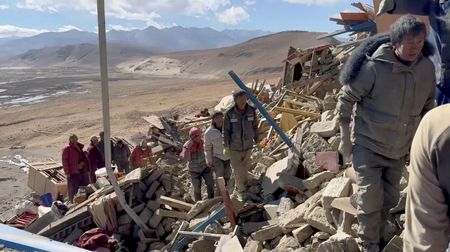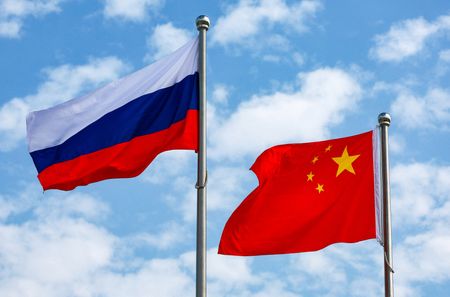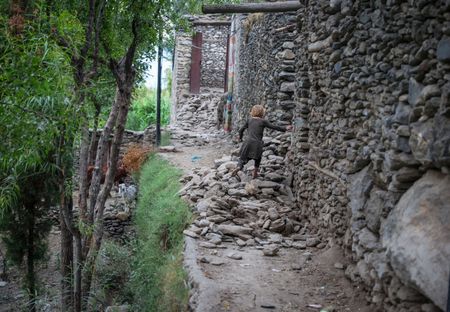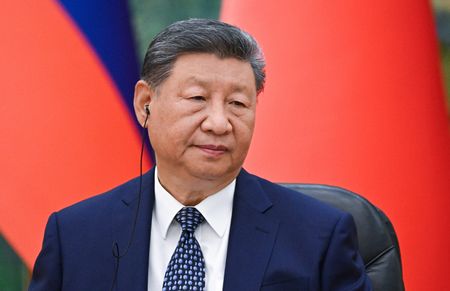By Colleen Howe
BEIJING (Reuters) -Tibet’s earthquake of magnitude 6.8 that killed 126 and damaged four water reservoirs this week highlights the risks from a hydropower building spree by Asian giants China and India in one of the world’s most remote, quake-prone regions, experts say.
Some 68 major dams in the Himalayan region exploit the enormous hydropower potential of high-altitude lakes and rivers – just a fifth of which has been tapped, researchers say, but face seismic risks.
Another 101 are in the stages of being planned or built.
Even before the quake centered on Tingri county, the northern gateway to the Mount Everest region, experts had voiced concern about both nations’ hydropower ambitions there, exemplified by China’s plan for the world’s largest hydropower dam.
The project, more than three times the size of the Three Gorges Dam, the world’s largest, is set to provide 34 gigawatts of clean energy vital to China’s aim of peak carbon emissions before 2030.
“A strong earthquake could cause direct damage,” Fan Xiao, a former chief engineer in the geology and mineral bureau of Sichuan in southwestern China, wrote in an article in October 2022 on the province’s Motuo project approved in late December.
Fan, who warned the project was in an area prone to strong earthquakes, did not respond to Reuters questions on messaging app Wechat about the article.
Hydropower projects in the remote mountainous area highlight the tension between the risks of building there and the enormous demand for clean power in China and India, the world’s No. 1 and No. 3 emitters of greenhouse gases respectively.
Earthquakes have damaged dams in the past, particularly by setting off landslides and rockfalls. A massive earthquake in Nepal in 2015 shuttered almost a fifth of its hydropower for more than a year, research published in 2018 showed.
Building more dams in the Himalayas is not sustainable, said C P Rajendran, a geologist at India’s National Institute of Advanced Studies, citing ecological concerns and the earthquake risk from the weight of gigantic reservoirs on faultlines.
AGEING RESERVOIRS
China’s water resources ministry has raised concerns about ageing reservoirs, more than 80% built between the 1950s and 1970s.
However, it did not respond to a faxed request for comment and has not detailed the reservoirs damaged in the Tibet quake.
The Motuo project has been rigorously tested for disaster prevention and mitigation, China’s foreign ministry has said.
Tectonic activity in the region could make the site hazardous though analysis is needed to determine specific risks at the site on the upper reaches of the Yarlung Zangbo river, said Wolfgang Schwanghart, a Potsdam University expert who studies the formation and changes of the earth’s surface.
His research in 2018 showed about a quarter of the region’s projects were at risk of moderate to severe damage in a future earthquake.
China says the dam will play a major role in reaching carbon peaking and neutrality goals and will stimulate the economy and create jobs.
Hydropower generation is more reliable and flexible than intermittent wind and solar, and helps with the urgent need to transition away from polluting coal.
But Fan said the project was unnecessary, given the low hydropower demand in sparsely populated Tibet and the high costs of transmitting it elsewhere.
Some mega-dam building in China may be motivated more by economics than energy needs, he said.
“The gross domestic product brought by huge hydropower projects, as well as the increase in investment and tax revenue, is a great temptation for the government and related interest groups,” Fan added.
(Additional reporting by Lewis Jackson in Beijing, Beijing newsroom and David Stanway in Singapore; Editing by Lewis Jackson and Clarence Fernandez)










